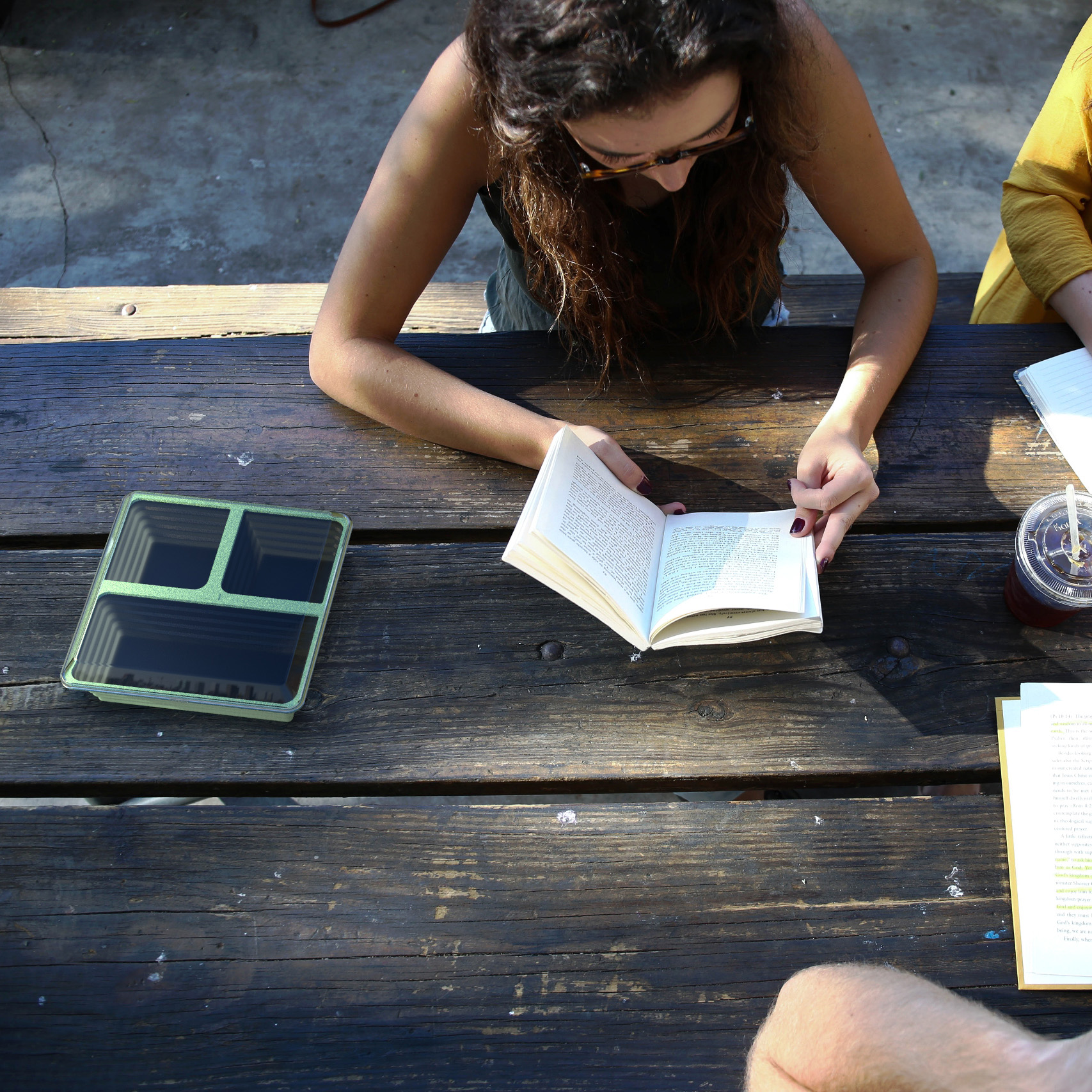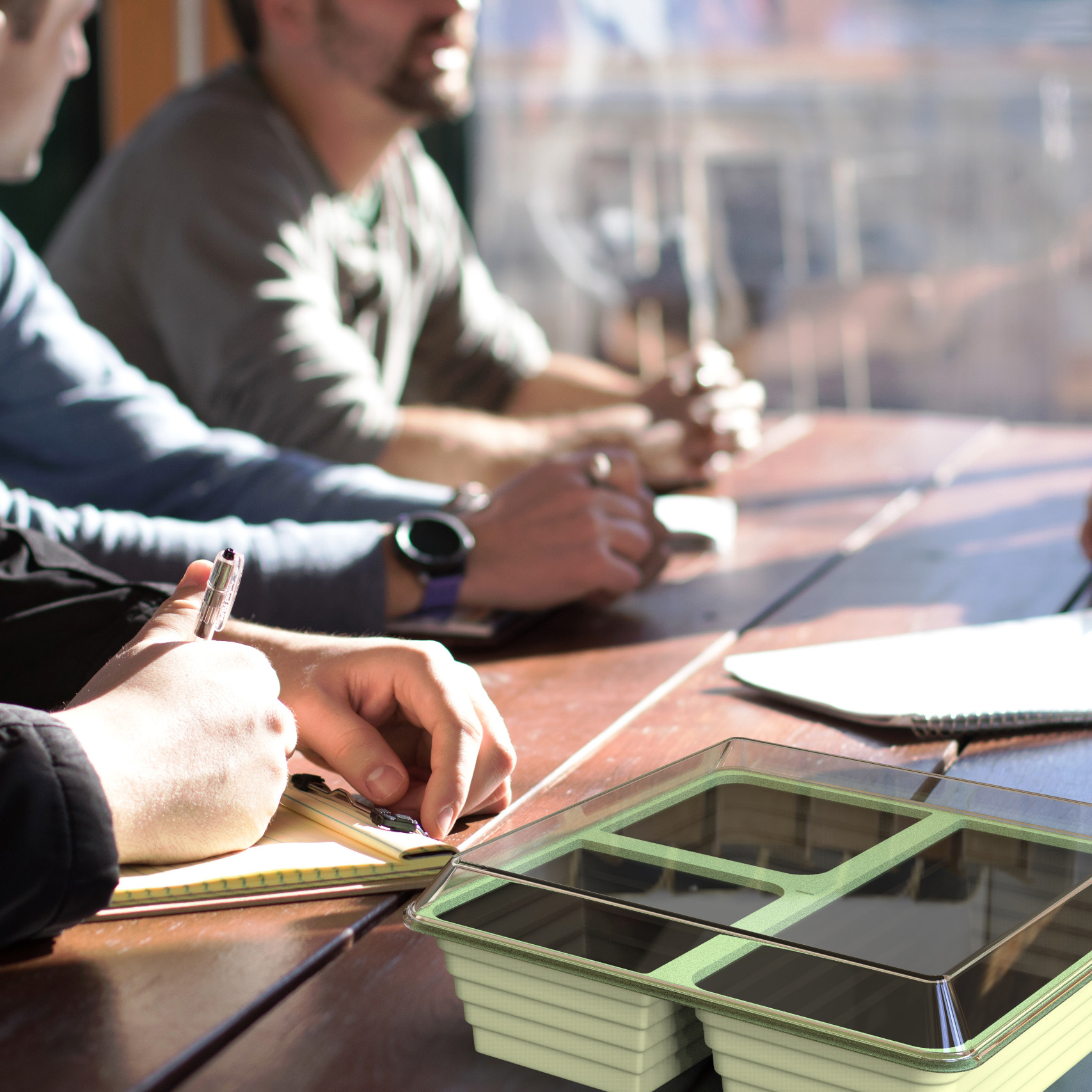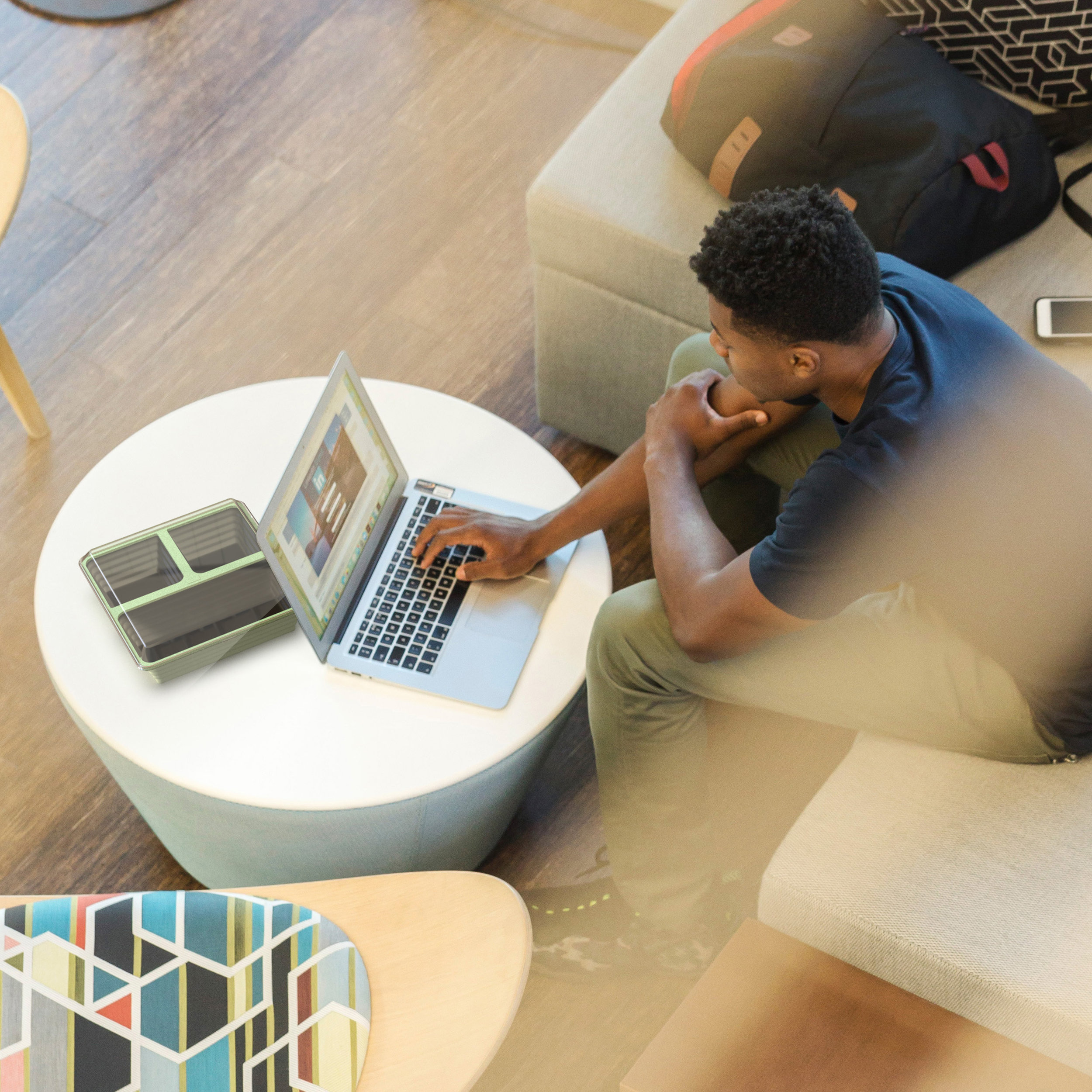Togo
Togo is a product and system working in tandem to improve the Iowa State University to go program by promoting sustainable eating habits, diverting waste, and encouraging efficiency of customer movement.
Problem
In early 2017, Iowa State University’s dining services revealed that they were considering cancelling the Eco To Go program due to low usage. This program allowed students to rent a reusable box and order food to go from any dining location. In practice, the program has many flaws, including limited service locations, poor user experience, and a clumsy box design.
Solution
My concept to reinvigorate the Eco To Go program includes a fully redesigned box that focuses on portability, expanded service options, and a reimagined checkout experience. I seek to refocus the program toward usability, sustainability, and flexibility.
Developed for ISU Sustainability Symposium 2017
Timeline
Spring 2017 | 3 ½ weeks
My role
Researcher
Designer
As a designer, I must be aware of my own sphere of influence based on my experience, skills, and connections, and at what level I can apply my work to make a difference. For this project, I focused on the local level and my ability to implement changes at Iowa State University. I chose to improve a system I personally feel connected to so that I could apply my skills for the good of other students.
In order to learn more about the dining habits of ISU students and their feelings about sustainability, I conducted a survey of 21 students. Many respondents expressed interest in sustainability, in particular discovering new methods of reducing their personal environmental impacts.
While nearly all respondants were aware of ISU Dining’s Eco To Go Program, less than a third used the service themselves, and almost half of the students interviewed do not understand how to use the current system.
I see an opportunity to enhance Iowa State University Dining's to go program to reduce packaging and food waste, streamline consumer movement, and encourage balanced eating among students.
To better understand why users were dissatisfied with meal bundle locations and thus did not utilize Iowa State University’s existing to go program, I developed a heat map of campus that highlights buildings where a student might buy a hot meal. Those surrounded by a purple circle are the only locations at which users can apply a ‘meal bundle’ option through their meal plan. This map makes it clear that a large portion of campus does not have easily access to a hot meal during class or work hours.
In green I outlined locations where I hoped to see the Togo box program implemented across campus. It is quite obvious that the southeastern part of the university could greatly benefit from the addition of hot meals and to go service in these locations.
The current ISU Dining Eco To Go program allows students to purchase an Eco To Go box for $10. They may bring the box to participating dining centers, leave their ISU Card with the greeter, and spend 15 minutes filling the box with food. The lid of the box must close over the food, and if the user spends over 15 minutes in the dining center, they are charged for an additional meal.
To make a product and service ‘ecological’ or ‘green’, I felt it was important to decipher what those concepts meant in the context of this project. I formulated a mind map of sustainability with five key branches:
- Value Local
- Account for Cost
- Share Power
- Respect Nature
- Live Within Limits
Focusing on this last branch, I consider living within one’s limits to include awareness of personal impact, reduction of consumption (both food itself and the packaging it comes in), and being an active steward of the environment. These beliefs guided the ideation process for my product and complementary service.
Moving into ideation, I realized that I needed to rethink not only the to go box, but the entire program as well.
The issues that frustrate users most about ISU’s existing to go box are its bulk, incompatibility with most dining locations, and frequency of loss or theft. To resolve these issues, I added additional functionality to the existing form, including
- Collapsible silicone compartments to flatten box when not in use
- Fully sealed silicone lid to prevent leaks, even when stored vertically in a backpack
- Transparent lid for easy evaluation of contents
- Embedded RFID tag to assign box to one user and time user inside dining center
These additional functions and features will make the Togo box much more user friendly than its predecessor.
The Togo system includes a brand new box design the is more user-friendly than its competitors; the box collapses to a thickness less than that of a textbook and seals completely for worry-free storage in a backpack. A transparent lid allows staff to quickly survey the contents, and an embedded RFID tag increases functionality.
The new Togo system would increase the availability of hot meals to the entire ISU campus, and eliminates the need to distract a Dining employee with an additional task.
When a box is checked out, it is scanned and assigned to the user. During use, the student scans the box upon entering and again before departure. This system streamlines the flow of people through a dining center, as well as improve security for students, as they never have to leave their ID card behind. An added benefit is that the system could self-time and charge a user accordingly.
TOGO
sustainably centered food system
expanded: 3 in h x 9 in w x 9 in d
flat: 1 in h x 9 in w x 9 in d
BPA-free, FDA approved food-safe silicone, polypropylene, RFID tag















